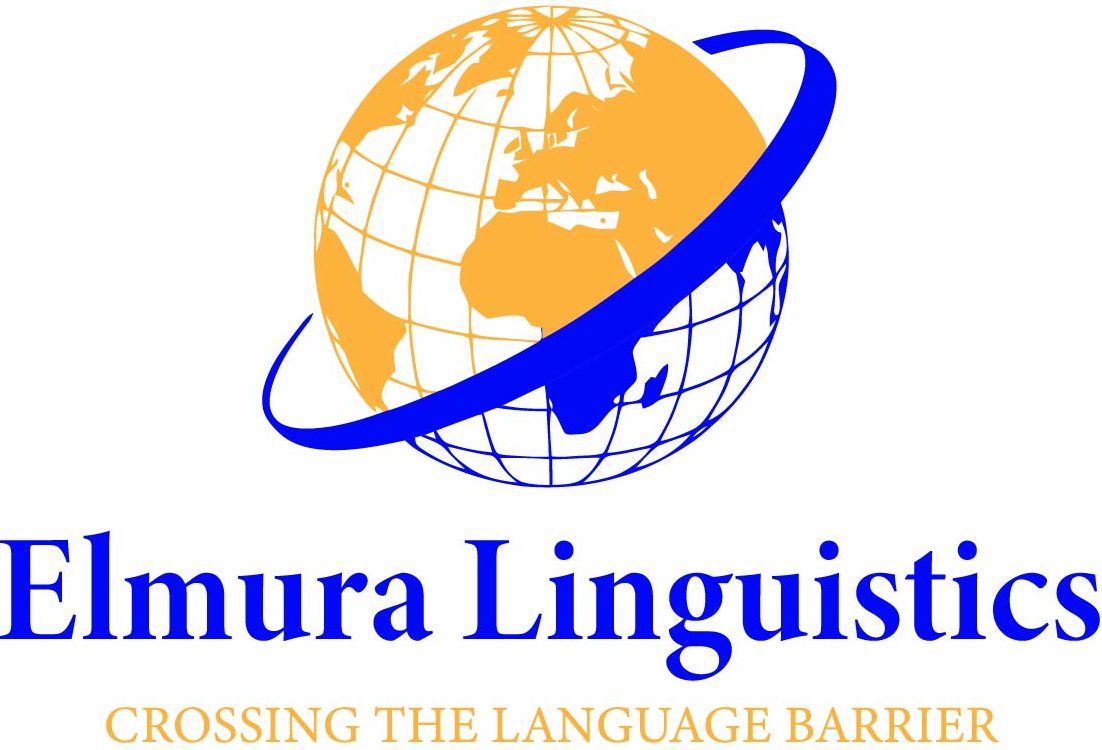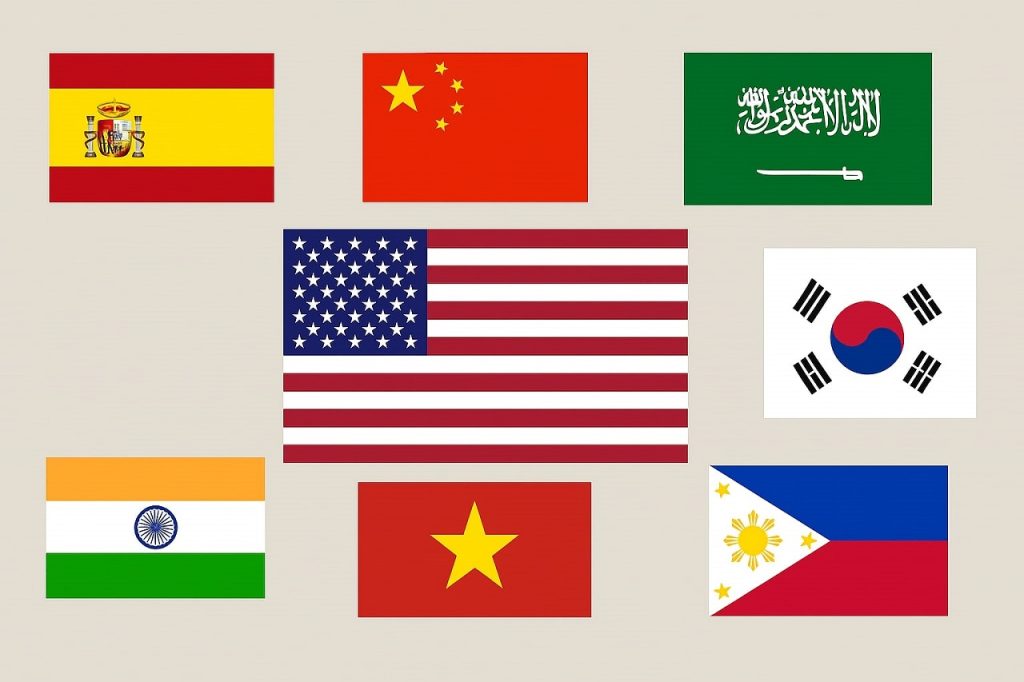Approximately 69.6 million people ( 1 in 5) in the United States speak a language other than English at home, according to the U.S. Census Bureau.
With shifting immigration trends, evolving media consumption, and cultural retention efforts, certain languages are growing rapidly across communities, schools, and workplaces.
Key Takeaways
| Rank |
Language |
Growth Rate (2020-2025 estimated) |
Primary Growth Drivers |
| 1 |
Spanish |
+7.5% |
Continued immigration, bilingual education policies |
| 2 |
Chinese (Mandarin/Cantonese) |
+5.2% |
Immigration, heritage speakers, global economic interest |
| 3 |
Arabic |
+4.8% |
Refugee resettlement, cultural programs |
| 4 |
Vietnamese |
+3.9% |
Community cohesion, language maintenance |
| 5 |
Hindi |
+3.7% |
South Asian migration, global entertainment influence |
| 6 |
Telugu |
+3.6% |
Indian tech migration, youth interest |
| 7 |
Korean |
+3.5% |
Media influence (K-pop), family transmission |
| 8 |
Tagalog |
+3.3% |
Intergenerational use, healthcare workforce |
(Data sources: U.S. Census Bureau, Pew Research, Migration Policy Institute, Duolingo Language Report 2024; growth rates modeled from available trend data)
Why Language Growth Matters (and How We Notice It)
Language growth is more than a demographic trend-it has tangible impacts on education systems, business operations, media strategies, and public services.
As certain languages become more widely spoken, they influence curriculum development, multilingual signage, customer engagement approaches, and cultural representation in media.
To identify which languages are growing in the United States, researchers and analysts rely on multiple data sources, including:
- U.S. Census Bureau language statistics
- Reports from local and state school districts
- User trends on language learning platforms
- Language usage across major social media networks
- Expansion of community outreach programs in urban centers
These indicators provide a comprehensive view of linguistic shifts and help forecast future language needs in public and private sectors.
1. Spanish – Sustained and Expanding

Spanish continues to be the most widely spoken non-English language in the United States. Its presence is growing beyond traditional strongholds like California and Florida, with notable increases in states such as Georgia and North Carolina.
Primary Growth Drivers:
- Higher birth rates within Hispanic and Latino communities
- Ongoing immigration from Central and South America
- Expansion of bilingual education programs across school districts
Notable Fact: According to the
U.S. Census Bureau’s American Community Survey, about 43.4 million people age 5 and older in the U.S. reported speaking Spanish at home during the 2018-2022 period, representing estimated 13.7% of the U.S. population in that age group.
Common Contexts Where Spanish Is Heard:
- Customer service systems
- Restaurant and retail signage
- Popular social media platforms such as TikTok and Instagram
2. Chinese (Mandarin and Cantonese) – Consistent Growth in Key Regions

Chinese is the third most commonly spoken language in the United States, with approximately 1% of the population speaking either Mandarin or Cantonese at home, according to the U.S. Census Bureau (2023).
Major Chinese-speaking populations are concentrated in California and New York.
Key Growth Drivers:
- Immigration from mainland China, Taiwan, and Hong Kong continues to contribute to Chinese-speaking community growth.
- Public education initiatives have expanded Mandarin dual-language immersion programs in urban school districts across the U.S., including San Francisco, New York City, and Los Angeles.
- Cultural and business hubs, such as Chinatown districts and technology corridors, support language retention and use in commerce.
- Digital media engagement via platforms like YouTube, WeChat, and TikTok promotes both Mandarin and Cantonese content domestically.
Cultural Indicators:
- Lunar New Year celebrations in cities like San Francisco and New York attract hundreds of thousands of attendees annually, reinforcing cultural visibility.
- Mandarin subtitles are increasingly present in U.S.-produced streaming content, reflecting growing demand from domestic Chinese-speaking audiences.
- Chinese cuisine proliferation, including modern fusion and regional food trucks, continues in metropolitan areas, maintaining linguistic and cultural relevance in day-to-day life.
3. Arabic – Rapid Expansion Across Diverse Communities

Arabic is one of the fastest-growing languages in the United States. As of 2023, over 1.4 million people speak Arabic at home-a growth of approximately 165,000 new speakers since 2018, according to U.S. Census Bureau and Pew Research Center data.
Since 1980, the Arabic-speaking population in the U.S. has increased by more than 580%.
Primary Growth Drivers:
- Refugee resettlement from conflict-affected regions including Syria, Iraq, and Sudan has significantly increased the number of native Arabic speakers in the U.S.
- Intergenerational language retention among second-generation Arab Americans has been supported by educational programs and community engagement.
- Expansion of public services translated into Arabic-particularly in healthcare, legal aid, and government documentation-has normalized the use of Arabic in institutional contexts.
Key Insight: Arabic speakers in the U.S. are linguistically and culturally diverse, representing a range of dialects such as Levantine, Egyptian, and Gulf Arabic. This diversity presents both a linguistic richness and a practical challenge for public-facing communication and education initiatives.
4. Vietnamese – Sustained Growth Through Community and Media

Vietnamese remains one of the most widely spoken Asian languages in the United States, with approximately 1.5 million speakers as of 2023, accounting for estimated 0.5% of the total U.S. population.
According to Pew Research Center (2024), Vietnamese Americans represent around estimated 8% of the Asian American population, with the largest communities concentrated in California and Texas.
Primary Growth Drivers:
- Established community networks in metropolitan areas such as San Jose, Houston, and Orange County continue to support cultural and linguistic retention.
- Vietnamese-language media, including television, radio, newspapers, and online platforms such as YouTube, maintain strong domestic engagement and cater to both first- and second-generation viewers.
- Ongoing immigration and intermarriage within Vietnamese-American families play a role in preserving the language across generations, even amid broader cultural integration.
Key Insight: Despite assimilation trends among younger generations, the Vietnamese language remains resilient due to cohesive community infrastructure and the popularity of digital Vietnamese content, especially entertainment media.
5. Hindi – Expanding Alongside South Asian Migration

Hindi has seen a notable rise in use across the United States, primarily driven by migration patterns and cultural preservation within Indian-American households.
While exact counts of Hindi speakers vary due to overlaps with other South Asian languages, it is among the most spoken Indian languages in the U.S., particularly in technology and academic hubs.
Primary Growth Drivers:
- High-skilled immigration from India-especially through H-1B visa programs – has led to increased concentrations of Hindi speakers in states like California, New Jersey, and Texas.
- Language maintenance within Indian-American families is reinforced through informal education, religious institutions, and Hindi-language media at home.
- Broader cultural engagement with South Asian traditions, music, literature, and cuisine has contributed to growing awareness and interest in the language, particularly among second-generation Indian Americans.
Cultural Integration Points:
- Hindi-language events and reading materials are more visible in desi-owned bookstores, community libraries, and cultural cafés.
- School-based language clubs and heritage programs increasingly include Hindi as part of multilingual curriculum initiatives.
- Voice recognition systems in smart devices (e.g., Alexa, Siri) now offer Hindi language support, reflecting its integration into mainstream tech platforms.
6. Telugu – Surging in Tech-Driven Regions

Telugu, a Dravidian language spoken predominantly in the Indian states of Andhra Pradesh and Telangana, has experienced significant growth in the United States over the past decade.
As of 2023, there are over 515,000 Telugu speakers in the U.S., reflecting an increase of 115,000 since 2018, according to Language Testing International.
Primary Growth Drivers:
- High concentration in technology hubs such as the San Francisco Bay Area, Dallas–Fort Worth, and Seattle, driven by large numbers of H-1B visa holders in engineering and IT.
- Academic and professional migration from cities like Hyderabad, a major global tech center, has contributed to the expansion of Telugu-speaking communities.
- Cultural engagement through national festivals, Telugu associations, and local events have helped preserve the language among younger generations and new arrivals.
Key Insight: In parts of the Bay Area, Telugu is among the fastest-growing South Asian heritage languages and has a notably high presence, particularly in Alameda and Santa Clara counties.
7. Korean – Cultural Influence Meets Heritage Preservation

Korean is one of the fastest-growing East Asian languages in the United States, supported by both cultural popularity and strong community-led language preservation. While exact figures vary, Korean remains among the top Asian languages spoken at home across several metropolitan areas.
Primary Growth Drivers:
- Steady immigration from South Korea, particularly among students and skilled professionals, continues to expand Korean-speaking populations in areas like Los Angeles, New York, and Atlanta.
- Second-generation Korean Americans are increasingly enrolling in Korean language schools and community programs to maintain linguistic and cultural connections.
- Mainstream exposure through Korean media, including K-pop, K-dramas, and food culture, has led to rising interest in Korean language acquisition beyond native-speaking communities.
Key Insight: According to internal reports from language learning platforms such as Duolingo and Rosetta Stone,
Korean has surpassed Japanese in new learner signups, particularly among users aged 18–34. This trend underscores both cultural appeal and perceived value of the language
8. Tagalog – Expanding Through Cultural Continuity and Service Industries

According to the Migration Policy Institute, about 1,803,005 people (age 5+) in the U.S. spoke Tagalog (including Filipino) at home in the 2023 dataset.
Meanwhile, the Pew Research Center reports that approximately 4.1 million Filipino Americans lived in the United States as of 2022.
Primary Growth Drivers:
- High representation of Filipino Americans in healthcare, particularly in nursing and caregiving roles, where Tagalog is frequently used in patient communication and workplace settings.
- Digital content creators, especially on platforms like YouTube and TikTok, are producing family-centered and comedic content in Tagalog, contributing to its relevance among younger audiences.
- Language preservation in multigenerational households, often through natural use in everyday conversation, supports consistent intergenerational transmission.
Key Insight: Despite assimilation pressures, Tagalog remains one of the most resilient heritage languages in the U.S., especially in states like California, Hawaii, and Texas, where Filipino communities are most concentrated.
Honorable Mentions: Emerging Languages to Watch

While not among the top fastest-growing languages nationwide, the following languages are showing notable regional growth and cultural relevance:
- Swahili – Experiencing gradual growth driven by immigration from East African nations and increasing interest through language learning platforms and academic programs.
- Russian – Maintaining a strong presence, particularly in Brooklyn, New York, and select West Coast cities, where Russian-speaking communities have long-established roots.
- French Creole (Haitian) – Showing significant growth in South Florida and parts of the Northeast, primarily due to Haitian immigration and the expansion of Creole-speaking communities.
FAQs
Is Spanish still growing, or has it plateaued?
It’s still growing, especially in Southern and Mid-Atlantic states. Growth is driven by both migration and large, young Spanish-speaking communities.
Why are Indian languages like Hindi and Telugu rising?
Tech migration, cultural pride, and second-gen education play huge roles. Also, Indian languages are commonly spoken at home, reinforcing retention.
What’s the biggest surprise language to watch?
Telugu! Its fast growth in tech areas is flying under the radar but making a major impact.
More than ever before! Especially with dual-language schools, apps, and a sense of cultural pride surging among younger generations.
More than ever before! Especially with dual-language schools, apps, and a sense of cultural pride surging among younger generations.
How can I learn one of these languages?
Apps like Duolingo, Italki, and YouTube tutorials are great starting points. Bonus: many community centers and cultural orgs offer low-cost classes.
Wrapping It Up
What we’re seeing in the U.S. is a beautiful evolution of what it means to be “American.” It’s not one language, one culture, one voice. It’s a whole orchestra of accents, scripts, and sounds that reflect the real pulse of the country.














